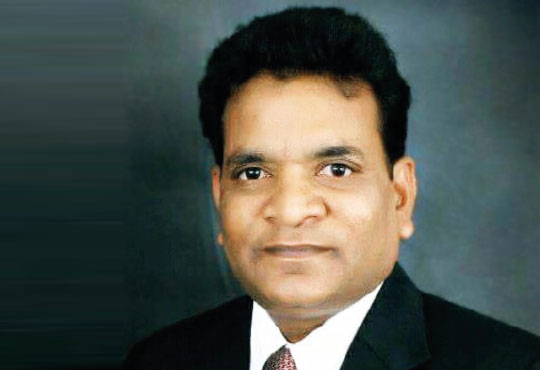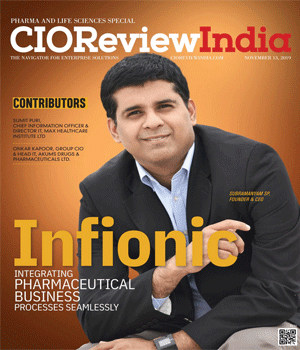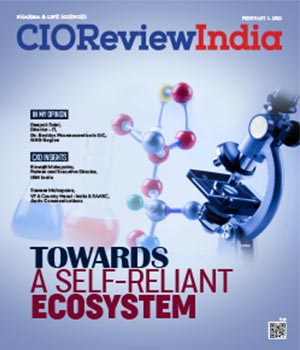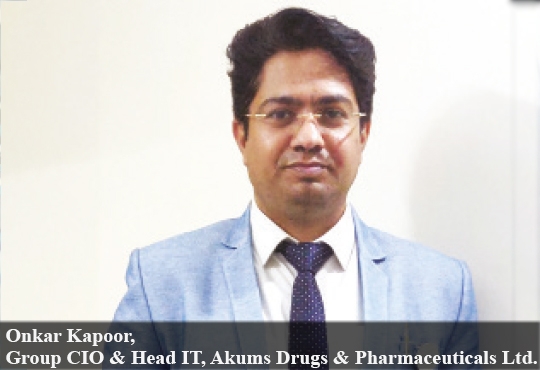
Challenges of Implementing IoT (Internet Of Things) in India
Sunil K Sonare, General Manager and Head - IT, Sadbhav Engineering Limited | Wednesday, 20 September 2017, 05:50 IST
 The concept of the Internet of things (IoT) is based on the technology, in which the millions of heterogeneous devices are seamlessly connected with internet and its vital information is stored, monitored and controlled remotely with the sensors installed on it. The rapid changes in economy and technology, the various industrial sectors i.e. manufacturing, utilities, automotive, transportation & logistics are harnessing its potential. The developments of IoT implementation are not good as expected in India, only a few companies are adopting these technologies.
The concept of the Internet of things (IoT) is based on the technology, in which the millions of heterogeneous devices are seamlessly connected with internet and its vital information is stored, monitored and controlled remotely with the sensors installed on it. The rapid changes in economy and technology, the various industrial sectors i.e. manufacturing, utilities, automotive, transportation & logistics are harnessing its potential. The developments of IoT implementation are not good as expected in India, only a few companies are adopting these technologies.
The digital space and recent technology development in the world with the advancement of technologies, data and information become the fuel of the economy. The data and information are used for the purpose of the predictive analysis and decision-making. Various sensors are being used to deploy the IoT Solutions in various industries and helping the technical and business leaders in perspective of improving the design, product features, business growth etc. It requires such revolutionary technology which provides anytime seamless connection among the sensors of different home appliances is the Internet of Things (IOT).
The IoT shall be able to integrate transparently and seamlessly a large number of different heterogeneous devices, while providing open access to selected subsets of data for the development of a large scale of digital services, to build a general architecture of IoT for gigantic projects such as smart cities. The remotely spread-out devices connection, are very complex because of the extremely large variety of devices, link layer technologies, protocols and services that are involved in such a system.
IoT is often associated with various automation and empowered the heterogeneous devices by the integration of sensors, transmitters and receivers which helps the application to collect, consolidate, analyze and take the design in an efficient manner for instance if a smart vehicle captures the drivers behaviors, fuel consumption during varying speed make a co-relation between the standard defined parameters and then it can smartly manage its internal setting of engines and other parts to avoid accidents to save human life and save the fuel and in turn move towards the profitability.
The advantages of using IoT in various industries can be listed.
Data: The continuous stream of data receiving through the various sensors are available in the form of information and help to make the fast decisions.
Monitoring: The remote monitoring of the devices through mobile and computers are easy and thus controlling the devices will be done from the remote.
Time: The time saving for the decision-making and monitoring is good else it will be tremendous.
Finance: The financial aspects are best advantages, else there are need to depend on the human on data collection and monitoring.
The IoT has few disadvantages too.
Sensor Compatibility: There are still no standardization of the sensors and still its dependency on vendors, which sensors to be used and how the data to be fetched.
Complex Architecture: The various sensors deployment on a single device, and connected through the network and sending the data to the cloud.
Security: The security of data is the biggest concern, as data encryption possibilities are negligible through the sensors on the devices. It can cause the big security threat and breach and may lead to losses may be in IP, Financial etc.
Major Challenges in India
There are so many basic problems and challenges of Indian IoT consumers that is why IoT adoption in Indian Companies and Organization would be very slow. Some of these IoT adoptions challenges are Lake of Standardization, data security issues, data storage and ownership issues, return on investment, etc., these are really not unique to India. Apart from these challenges, IoT in India would consider with some other challenges are as given below.
Internet availability: Even today Internet connectivity, Internet connection reliability, and availability of required connection bandwidth are still a major challenge in India. The density of the internet connection and users are very low in India and telco are still struggling to provide required bandwidth internet connection in remote areas and an IoT consumer adoption – this can remain the most important challenge.
Cost of IoT: Indians consumers in respect of any technology are very selective in terms of investment in convenience and technology. Even some products such as smart wearable fitness bands are yet to take off in India and price is a major factor.
Lack of vendor activity: Global vendors are generally or by mistaken assume that Indian consumers are not ready for advanced devices or product. This is very much obvious in case of adoption of technology and IoT space, with rarely any kind of vendor activity today. This led to low level of awareness of IoT Systems among the Indian consumers.
Overall infrastructure challenges: Not only the internet but the supporting infrastructure such as Smart power grids, Smart drainage/ sanitation System, Smart Water Supply etc., which are an indistinguishable part of a life of citizens and these are far from being ready to use in India.
Lack of skilled resource in India: IoT adoption is also constrained by the unavailability of a skilled workforce for implementation of nationwide IoT enabled systems. According to the report of Labor Bureau Report of 2016 the skilled workforce in India is only two percent of total population, which is much lower when compared to some other developing nations. So there is need to introduce some educational programs that help the workforce to learn these technologies and meet the requirements in order to support the growing ecosystem.
The some risk factors, which are a big threat since one year also making some hurdles in adopting the IoT in India, are hacking and data ownership. With the increase in Ransomware in the past few years, the security is the biggest threat and if any devices are attacked by hackers and controlled by them, and make its harsh usage will lead to the big losses to the organization. The second big risk will be data ownership, if the IoT based application running on cloud servers, and the ownership of received data on servers through these sensors from the device still not has clarity.
In spite of that, in India with the penetration of internet connectivity and adoption of new technologies in Indian companies may attract the IoT implementation and take a pace from the year 2020.
CIO Viewpoint
Paving the Way for Digital Transformation of...
By Abhrasnata Das
Leveraging IT to ensure Data Integrity in...
By By Deepak Saini,Director – IT,Dr. Reddys Pharmaceuticals LLC, NAG Region
How Is Technology Disrupting The Pharma And...
By Onkar Kapoor, Group CIO & Head IT, Akums Drugs & Pharmaceuticals Ltd.
CXO Insights
The Growing Importance Of Supply Chain...
By Gustavo Salem, Group President, IDEX Health & Science LLC
A Symbiosis Of Technology And Nature
By Amanda L. Goltz, Vice President, Digital Innovation, BTG
Next-Generation Commercial Data Management...



.jpg)
.jpg)
.jpg)





